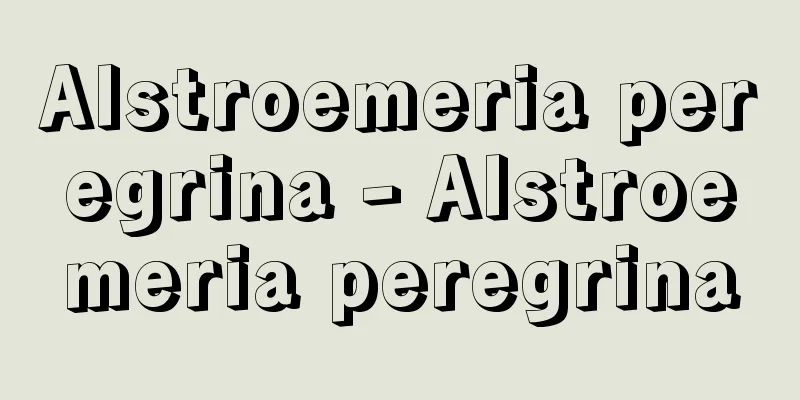Still life - still life English

|
Paintings depicting still lifes (things that do not move by themselves) such as flowers, fruit, dead fish or small birds, and various tools. It was in the 17th and 18th centuries that this genre was established as a genre in Western painting, but it had been painted alone or in association with other themes since ancient times. Pliny records that Zeuxis was highly praised in Greece for painting bunches of grapes. Ancient Roman wall paintings and mosaics also had a genre called xenia (food paintings), which featured food on the table or leftovers scattered on the floor, and aimed to demonstrate trompe l'oeil-like technique and allegory of hospitality to guests. In the Middle Ages, there are no examples of still lifes in the style of Christian thought, which neglected the realism of things. However, from around the end of the 14th century, as interest in real objects and nature increased, some religious paintings began to depict still lifes on tables, flowers, and flowers in vases. At the same time, attempts were made to depict shelves and the still lifes placed on them in marquetry murals, also aiming for a trompe-l'oeil effect. In the 15th century, interest in still lifes and the desire to reproduce them precisely increased, and the main subjects chosen were vases of lilies and zelkova, which represent the virginity of the Virgin Mary, the dining tables for "The Last Supper" and "The Marriage at Cana," the lute, a stringed instrument that was both a symbol of music and vanity and a favorite subject for exploring perspective, and books on the desk of a saint in meditation. Following the precedent of the independent still lifes painted on the backs of altarpieces in the 15th and 16th centuries, in the 17th century, still lifes independent of other subjects were painted by Caravaggio, Jan Bruegel and others in Flanders, Holland and Spain. In the Netherlands, where the interest in reality in civil society was particularly strong, many painters in the Netherlands used flowers, fruit, dining tables, markets and hunting prey as their subjects, setting the precedent for the production of still lifes in other countries in the 17th and 18th centuries. The origin of the word "still life" comes from the Dutch word "still-leven". In other countries, still life paintings were still in a lower position than genres such as religious paintings in the 17th century, but they were often painted as decorative themes and "allegories of the five senses", and these eventually flourished in the 18th century in France with Chardin, the "painter of flowers and fruit". This tradition was revived in the 19th century, and after the Impressionists, it became a central genre of painting along with landscape painting, giving birth to artists such as Cézanne. The 20th century further sharpened Cézanne's pursuit of "the spatial relationship between objects," and Fauvism and Cubism completely transformed the concept of still-life painting. In the East, still life painting does not have a history comparable to that of Western painting, because the East did not have the perspective to analytically grasp the true nature of things in the natural world. There are many examples of still life being chosen as a subject in China, too, but it can be said that the intention was to express the life that the object possesses, rather than its reality. In Japan, still life painting was not established as a genre until the modern era. [Kimio Nakayama] [References] | | |Source: Shogakukan Encyclopedia Nipponica About Encyclopedia Nipponica Information | Legend |
|
花、果実、魚や小鳥の死体、各種用器具などの静物(それ自体は動かないもの)を描く絵画。これが西洋絵画の一ジャンルとして確定するのは17~18世紀であるが、古くから単独に、また他の絵画の主題に随伴して描かれていた。すでにギリシアでは、ゼウクシスZeuxisがブドウの房を描いて高い評価を受けたことがプリニウスの記にある。古代ローマの壁画やモザイクにも、食卓上の食物、あるいは床上に散乱した食べ残しを題材とする、いわゆるクセンア(食糧画)とよばれるジャンルがあり、トロンプ・ルイユ(だまし絵)的な技巧の熟練と、客へのもてなしの寓意(ぐうい)性を目ざしていた。 中世においては、事物の写実を軽視したキリスト教思想の影響でその作例はないが、14世紀末ころから現実の物や自然への関心が高まるにつれ、宗教画の一部に卓上の静物、草花や花瓶の花などが描かれ始める。そして同時期、棚やその上に置かれた静物の表現が、やはりトロンプ・ルイユ的効果をねらった壁画の寄木細工などで試みられている。さらに15世紀には、静物への関心とその精密な再現への志向が高まりをみせ、とくに聖母マリアの純潔を示すユリやイチハツの花瓶、「最後の晩餐(ばんさん)」や「カナの結婚」のための食卓、音楽と虚栄の象徴でもあり遠近法の探究の好対象でもあった弦楽器リュート、瞑想(めいそう)する聖者の机上の書物などが、その主要な題材に選ばれている。 こうして15~16世紀に祭壇画の裏面などに独立した静物が描かれたのを先例として、17世紀になるとフランドル、オランダ、スペインで、他の主題から独立した静物画がカラバッジョ、ヤン・ブリューゲルらによって描かれた。とくに市民社会の現実的関心が強まったオランダでは、多くの画家がこぞって花や果実、食卓、市場、狩りの獲物を題材にして、17~18世紀の他国における静物画制作の先鞭(せんべん)をつけた。still lifeの語源は、オランダ語のStill-Levenに由来している。他の国々では、17世紀にはまだ宗教画などのジャンルに比べて静物画の地位は低かったが、装飾的テーマや「五感の寓意」としてはよく描かれており、これらはやがて18世紀フランスの「花と果実の画家」シャルダンにおいて開花する。そしてこの伝統は19世紀に再生し、印象派以降、風景画とともに絵画の中心的ジャンルとなってセザンヌらを生んだ。20世紀はさらにセザンヌが追求した「物と物との空間の関連」の課題を先鋭化し、フォービスム、キュビスムによって静物画の観念が一新している。 なお東洋においては、自然界における事物の真実のあり方を分析的にとらえる視野をもたなかったために、西洋絵画での静物画に匹敵する歴史をもっていない。中国においても画題に静物が選ばれた例は多いが、それはそのものの実在性よりも、そのものがもつ生命の表出に意が用いられたということができる。日本においても静物画が一つのジャンルを確立したのは、近代以降である。 [中山公男] [参照項目] | | |出典 小学館 日本大百科全書(ニッポニカ)日本大百科全書(ニッポニカ)について 情報 | 凡例 |
<<: Biochemical oxygen demand - Biochemical oxygen demand
Recommend
Tall grass - Jousou
A haiku poet from the early Edo period. Mr. Naito...
Akazawa Copper Mine
…Since the completion of the Joban Line (then the...
Eikado Hasei
...A collection of Kabuki actors' talks on th...
Cobden, Richard
Born: 3 June 1804, near Midhurst, Sussex Died Apri...
Ur - Ur (English spelling)
A city in southern Mesopotamia. The ruins are loc...
Cercopithecus mona mona (English spelling) Cercopithecusmonamona
…[Hironari Hayaki]. . … *Some of the terminology ...
dispersion primaire d'âge ancien (English) dispersionprimaire dageancien
…Next, the main criterion for the formation of di...
Chaetomorpha - Chaetomorpha
A seaweed of the family Cladophoraceae in the orde...
Wagner, S.
...German composer. His librettos for music drama...
Aofutabaran - Aofutabaran
... About 30 species of Listera are known, mainly...
window seat
…In the second half of the 17th century, a backle...
Avennel - Avennel
...In the Christian version of the Buddha legend,...
needle work
..."Shi" means to sew with a needle, an...
Kisshoten repents
…Shosekigetsukai is also called Shuseki for short...
Mustard shop - Mustard shop
…His pen names were Toyotei, Shukodo, and Tatsumi...









